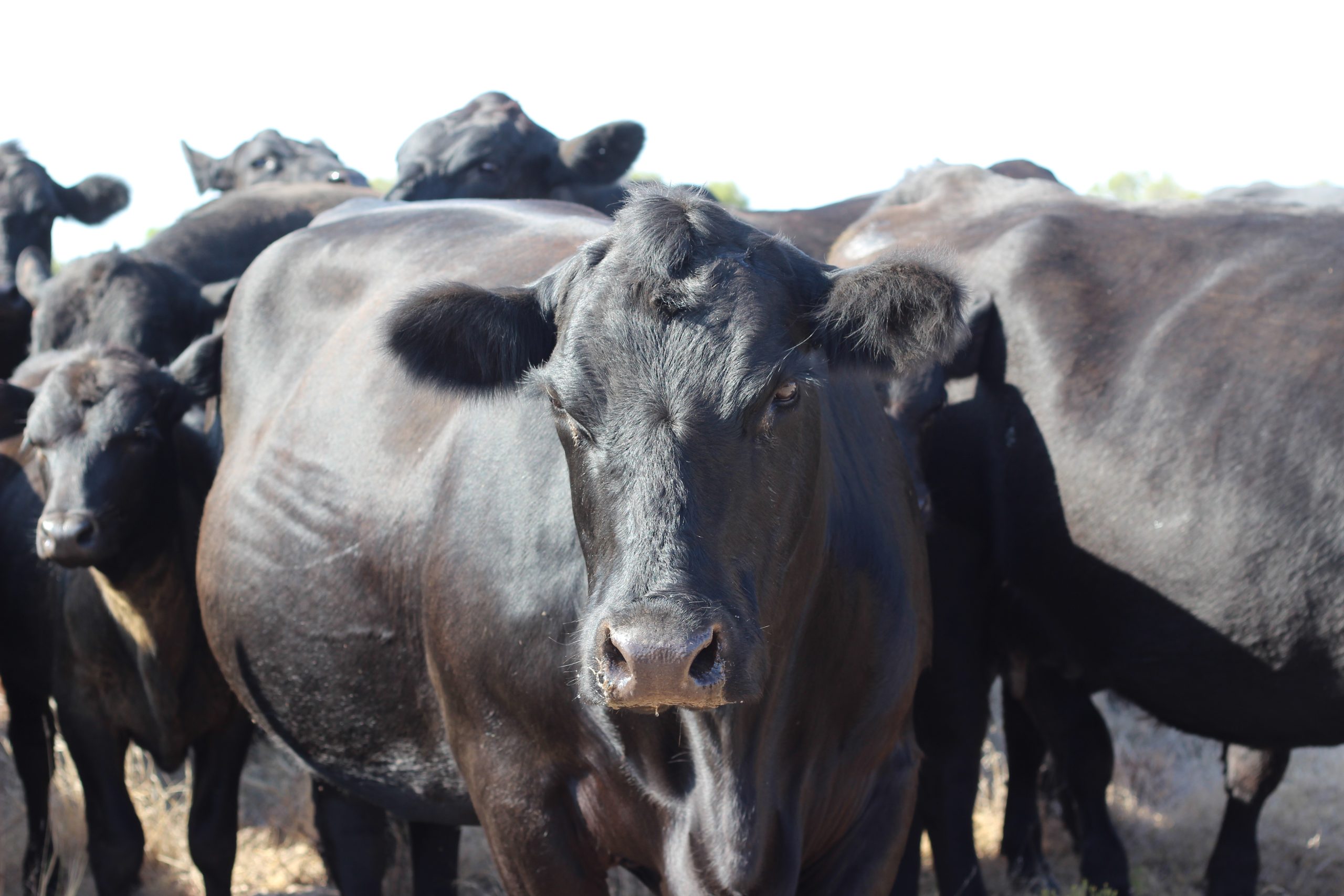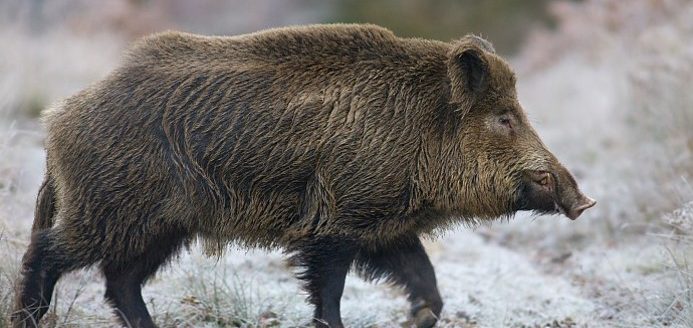Reflections on life and livestock from Minnie Lou Bradley


When it comes to trailblazing women in agriculture, Minnie Lou Bradley easily sorts herself to the top. Originally from Hydro, Oklahoma, Bradley was the first woman to enroll at Oklahoma Agricultural and Mechanical College, which is now Oklahoma State University. She earned her degree in animal husbandry in 1953.
This living legend—with the help of her daughter and son-in-law—still operates the nearly 70-year-old Bradley 3 Ranch, near Childress, Texas. This 13,000-acre Angus and Charolais seedstock operation is an anchor of sustainability, superior genetics and reproductive efficiency in the cattle industry. Bradley spoke on a recent OSU Extension webinar about her life, career and experiences in the cattle industry.
In her youth
Bradley became interested in agriculture at age 5, when she was sent to live with her grandparents for several months while her sister had to have a major surgery. She became close to her uncle during her stay, and she tagged along when he checked on his FFA projects and tended to other farm chores. Her exposure to all types of agriculture during this time became the catalyst that would ignite a passion for livestock, specifically.
By the time Bradley had turned 9, she asked her grandfather if she could show a lamb at a livestock show in Oklahoma City. He let her choose 10 lambs from several hundred on his farm to exhibit the following spring. They arrived at the show, but her grandfather realized it was all adults entered and no children. Bradley would not be deterred. She was entered, and she was determined to show her sheep.
“I happened to win,” Bradley said. “I got the blue ribbon, and that set everything off. The Oklahoma City Times put me on the front page as the 9-year-old who beat the adults.”
Around this time, Bradley began judging livestock and discovered she had a talent for judging and giving reasons. Bradley credits FFA instructors and Extension educators with supporting the passion she developed from such a young age.
“I wanted to judge every Saturday if I could,” Bradley said. “I just loved to go to those field days, and they had field days all over Oklahoma at the time. I’d beg someone to take me, whether it was the FFA teacher, my dad or grandad. I just imagined that Oklahoma A&M had representatives there, and it was the only school I ever thought to go to.”
Collegiate achievements
When Bradley enrolled in college at Oklahoma A&M, she had no idea the challenges she would face or the glass ceilings she would shatter.
“Ignorance is really good at times,” Bradley said. “I didn’t know anything about college, and I surely didn’t know I would be the only girl. That never entered my mind.”
Bradley faced adversity as the only female student, but she earned the respect of her teachers and classmates because she stayed committed, even when she wanted to quit. She tried out for the meat and livestock judging teams, but decided to focus on her true love, livestock. After practicing with the team for months, the time came for selection of the team members who would attend the first judging contest in Denver, Colorado.
“I worked out just like the boys did, and I never did miss a practice,” Bradley said. “I had the scores, but my name wasn’t on the list. My heart was broken, and I couldn’t figure it out.”
She said the judging coach called her into his office and said the reason her name was not on the list was because Oklahoma A&M had never had a woman compete in judging, and the coaches feared the judges would not take her seriously when she gave reasons.
“They were leaving me at home,” Bradley said. “It really got to me, but I just kept going. Fort Worth came next, and I knew my name had been on the top for every breakout.”
Even though she knew her scores had earned her a spot to compete at Fort Worth, it was still difficult for the coaches to accept.
“I had a meeting with the president and people from the school, and they said, ‘We can’t find anything that says you can or can’t go. So, we’re going to let you go,’” Bradley remembered.
Fortunately, Bradley proved she was up to the task, and gender was of no consequence in livestock judging. After a successful first contest in Fort Worth, she went on to be the top beef cattle collegiate judge at the 1952 American Royal Livestock Judging Contest. Later, she was first in sheep, second in horse and high individual at the Chicago International competition in 1952.
Bradley’s dominance at judging competitions paved the way for other young women to be inspired to enter judging competitions and pursue careers in agriculture. In 1988, Bradley was named a graduate of distinction from the OSU Department of Animal Science and presented the master breeder award from the department in 2010.
She was named a Ferguson College of Agriculture distinguished alumnus in 2015 and later an OSU distinguished alumnus in 2023. In 2006, she was inducted into the National Cowgirl Hall of Fame. She was also inducted into the Saddle and Sirloin Portrait Gallery in Lexington, Kentucky, in 2015.
Building the Bradley 3 Ranch
After college, Bradley, along with her husband, Bill, became owners of what is now the Bradley 3 Ranch. The couple started with 20 cows and 3,300 acres of rough, Texas ranch country.
“No one had ever lasted more than nine years on it,” Bradley said. “They’d all gone broke.”
It took some time to tame the property, but with patience and the integration of Angus genetics on Hereford cows, the Bradleys built a valuable seedstock and commercial cow-calf operation.
After 20 years, Bradley was still open to change and adaptions to improve the land and the ranch’s productivity. Around that time, an old cowboy told Bradley she was understocking and overgrazing the ranch, and this comment was the lightbulb that set the operation on the track to true efficiency.
“We were understocking so much, trying to make the grass better, that we had let the cows become selective,” Bradley said. “If you’re offered ice cream or a Fig Newton—which I never did like—you take the ice cream.”
With the use of radio frequency collars, the Bradleys learned their cows were only using 10% of their worst pasture, which was full of red berry juniper trees. To improve the pastures, the Bradleys removed many of the trees that were making their pastures unproductive.
“It cost us 10 times what we gave for the ranch per acre to clear the trees,” she said.
Returning the pasture back to tall grass country does not happen overnight, but with the use of intensive and rotational grazing, Bradley said the ranch has gone from fewer than 250 cows to now running 400 cows.
Another element of the Bradleys’ success is that they were early adopters of Standardized Performance Analysis, ultrasound technology, DNA testing, Expected Progeny Differences and scrotal circumference measurements and have consistently weighed their cows since 1961. The combination of their strategies helped to streamline the operation and improve selection and productivity.
“A cow is an individual,” Bradley said. “We can’t run them as a herd. We’ve got to know the production on each cow. We set up a goal for our cows years ago, that they had to wean 50% of their body weight every 12 months, or they’re gone. You have to run it as a business. You love your land and your cattle, but you’ve got to make them mind, and they’ve got to work for you.”
For the Bradley 3 Ranch, being disciplined and sticking to high standards has molded the ranch into one of the most consistent and fertile herds in the United States. Bradley said farming and ranching has always been a challenge, and it will continue to be in the future, but with the correct mindset, it can be profitable and satisfying.
“I would never tell anyone they can’t succeed if they want to work hard enough,” Bradley said. “It’s not going to be easy, but it’s really rewarding.”
Lacey Vilhauer can be reached at 620-227-1871 or [email protected].



